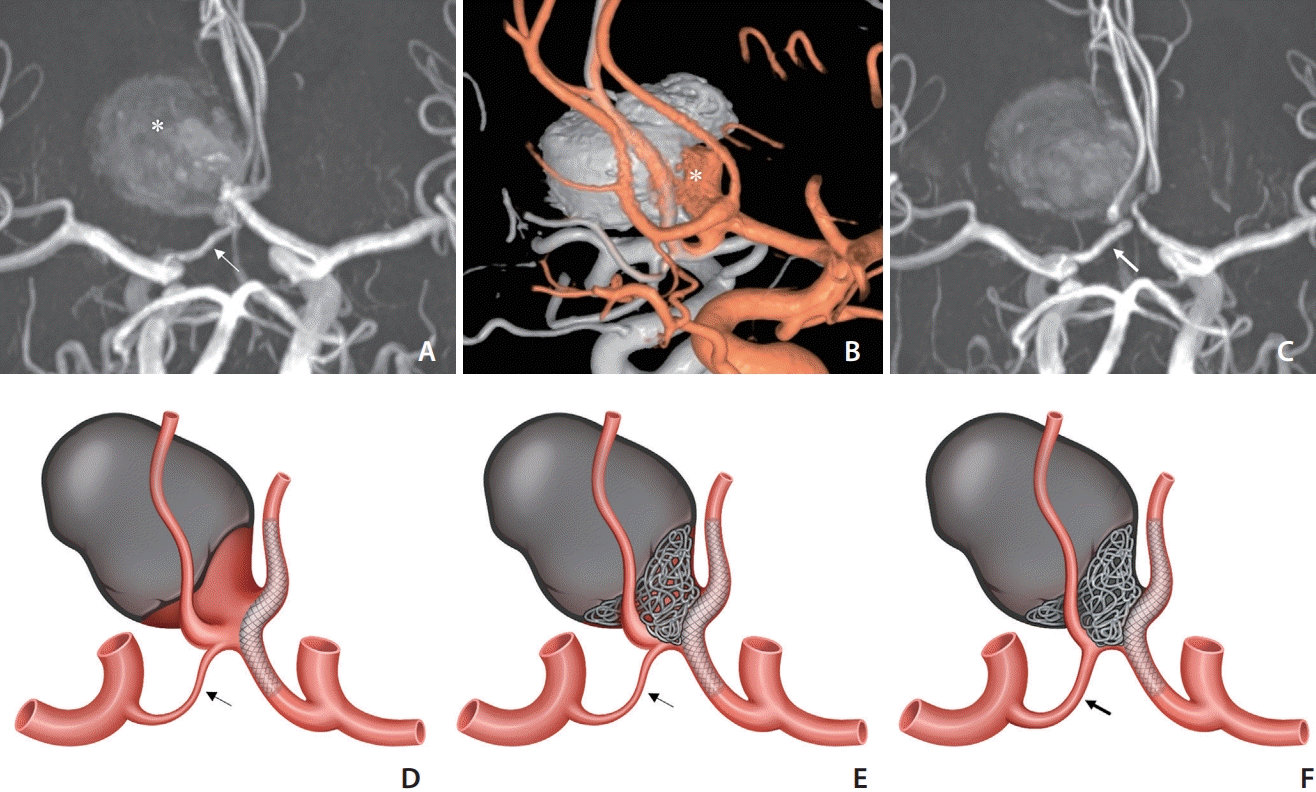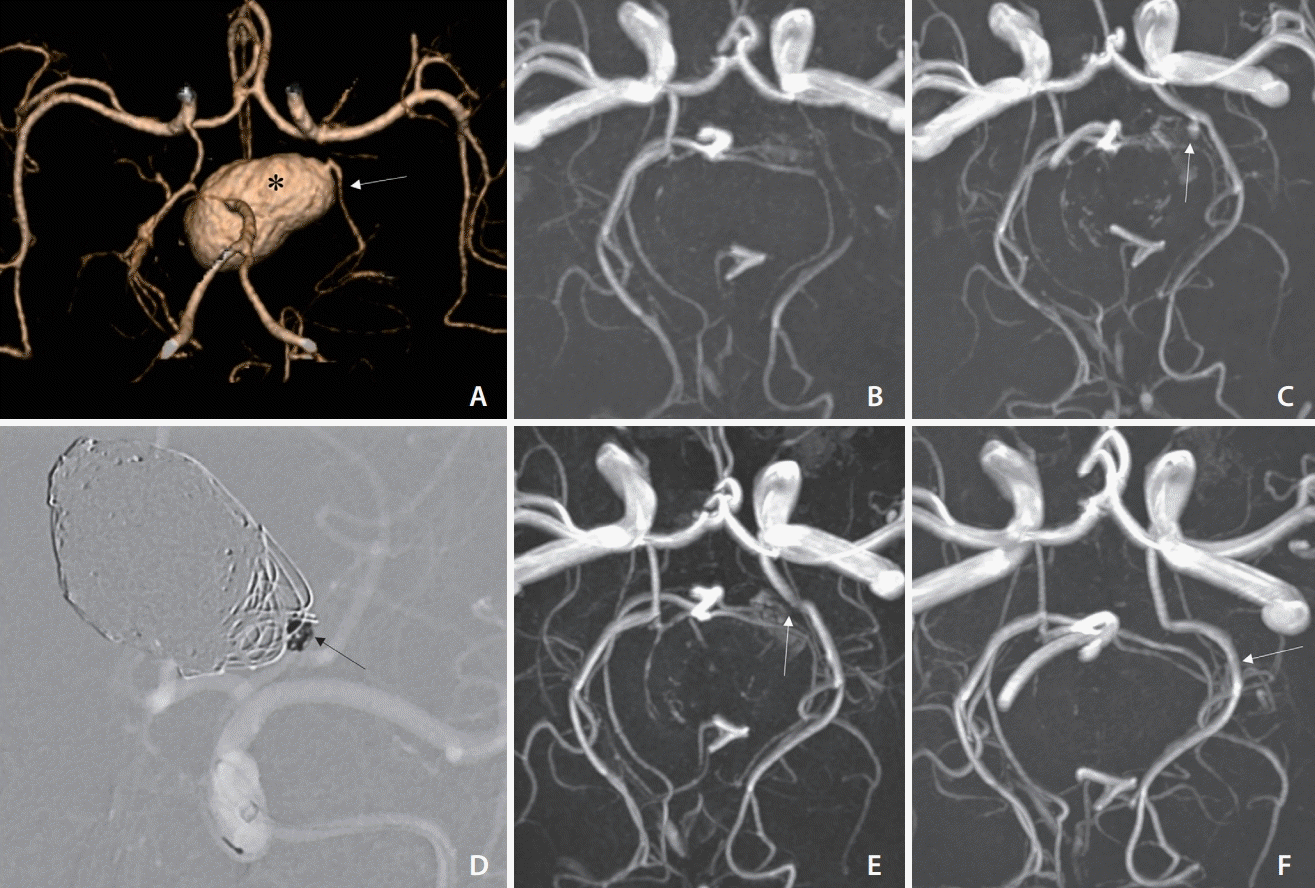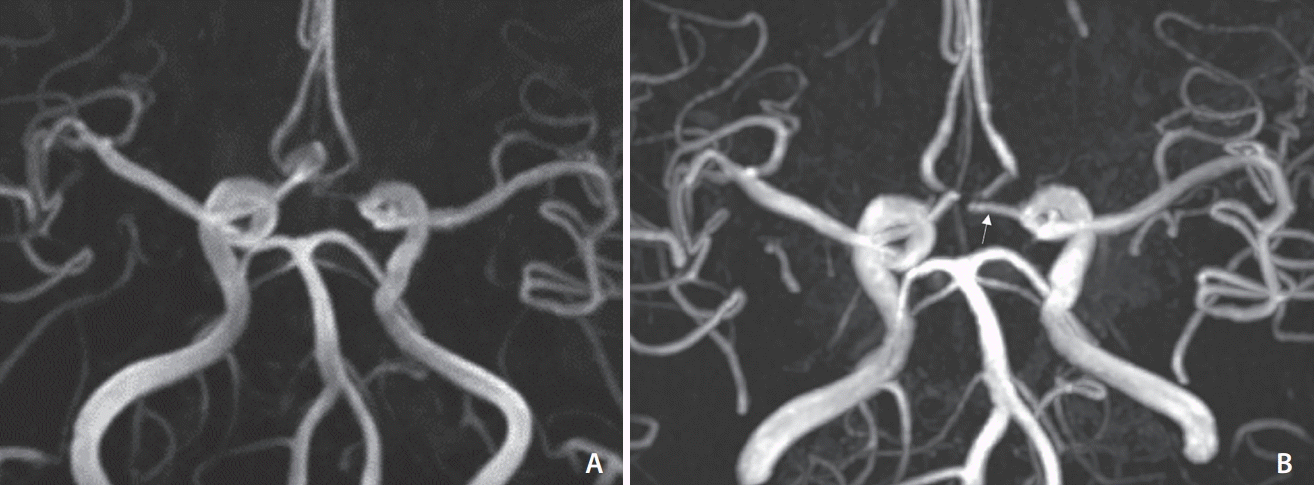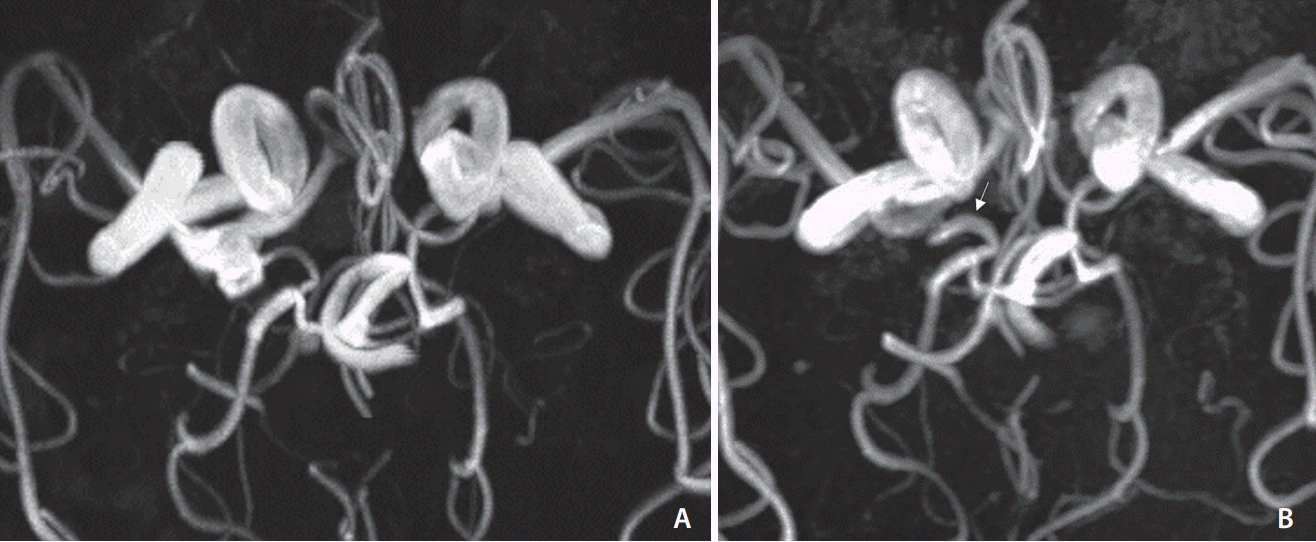1. Suh DC, Choi YH, Park SI, Yun S, Jeong SY, Jeong S, et al. Outpatient day-care management of unruptured intracranial aneurysm: a retrospective cohort study. Korean J Radiol. 2022; 23:828–834.

2. Kim JJ, Yang H, Kim YB, Oh JH, Cho KC. The quantitative comparison between high wall shear stress and high strain in the formation of paraclinoid aneurysms. Sci Rep. 2021; 11:7947.

3. Song Y, Kwon B, Al-Abdulwahhab AH, Nam YK, Ahn Y, Jeong SY, et al. Rare neurovascular diseases in Korea: classification and related genetic variants. Korean J Radiol. 2021; 22:1379–1396.

4. Dandapat S, Mendez-Ruiz A, Martínez-Galdámez M, Macho J, Derakhshani S, Foa Torres G, et al. Review of current intracranial aneurysm flow diversion technology and clinical use. J Neurointerv Surg. 2021; 13:54–62.

5. Song Y, Lee JK, Lee JO, Kwon B, Seo EJ, Suh DC. Whole exome sequencing in patients with phenotypically associated familial intracranial aneurysm. Korean J Radiol. 2022; 23:101–111.

6. Hassan T, Hassan AA, Ahmed YM. Influence of parent vessel dominancy on fluid dynamics of anterior communicating artery aneurysms. Acta Neurochir (Wien). 2011; 153:305–310.

7. Park W, Song Y, Park KJ, Koo HW, Yang K, Suh DC. Hemodynamic characteristics regarding recanalization of completely coiled aneurysms: computational fluid dynamic analysis using virtual models comparison. Neurointervention. 2016; 11:30–36.

8. Alastruey J, Parker KH, Peiró J, Byrd SM, Sherwin SJ. Modelling the circle of Willis to assess the effects of anatomical variations and occlusions on cerebral flows. J Biomech. 2007; 40:1794–1805.

9. Songsaeng D, Geibprasert S, Willinsky R, Tymianski M, TerBrugge KG, Krings T. Impact of anatomical variations of the circle of Willis on the incidence of aneurysms and their recurrence rate following endovascular treatment. Clin Radiol. 2010; 65:895–901.

10. Misaki K, Uno T, Nambu I, Yoshikawa A, Kamide T, Uchiyama N, et al. Prediction of post-embolization recurrence of anterior communicating aneurysms with A1 segment asymmetry by fluid dynamic analysis. J Neuroendovascular Ther. 2021; 15:71–76.

11. Jang CK, Chung J, Lee JW, Huh SK, Son NH, Park KY. Recurrence and retreatment of anterior communicating artery aneurysms after endovascular treatment: a retrospective study. BMC Neurol. 2020; 20:287.

12. Kim MJ, Chung J, Park KY, Kim DJ, Kim BM, Suh SH, et al. Recurrence and risk factors of posterior communicating artery aneurysms after endovascular treatment. Acta Neurochir (Wien). 2021; 163:2319–2326.

13. Xu L, Zhang F, Wang H, Yu Y. Contribution of the hemodynamics of A1 dysplasia or hypoplasia to anterior communicating artery aneurysms: a 3-dimensional numerical simulation study. J Comput Assist Tomogr. 2012; 36:421–426.

14. Kadirvel R, Ding YH, Dai D, Lewis DA, Kallmes DF. Proteomic analysis of aneurysm healing mechanism after coil embolization: comparison of dense packing with loose packing. AJNR Am J Neuroradiol. 2012; 33:1177–1181.

15. Lee KS, Zhang JJY, Nguyen V, Han J, Johnson JN, Kirollos R, et al. The evolution of intracranial aneurysm treatment techniques and future directions. Neurosurg Rev. 2022; 45:1–25.

16. Chueh JY, Vedantham S, Wakhloo AK, Carniato SL, Puri AS, Bzura C, et al. Aneurysm permeability following coil embolization: packing density and coil distribution. J Neurointerv Surg. 2015; 7:676–681.

17. Kim S, Kang M, Choi JH, Kim DW. Safety of coil occlusion of the parent artery for endovascular treatment of anterior communicating artery aneurysm. Neuroradiol J. 2016; 29:201–207.

18. Lee D, Song Y, Han M, Park D, Suh DC. Low-dose prasugrel in patients with resistance to clopidogrel for the treatment of cerebral aneurysms. Neurointervention. 2018; 13:124–127.

19. Lee D, Song Y, Shin JH, Suh DC. Low-dose prasugrel in patients with resistance to clopidogrel for the treatment of cerebral aneurysms: follow-up of over 6 months. Neurointervention. 2019; 14:68–70.

20. Kurniawan RG, Song Y, Kwon B, Ahn Y, Suh DC. Tailored antiplatelet agent medication in clopidogrel hyporesponsive patients before stent-assisted coiling: single-center experience. Neuroradiology. 2020; 62:1709–1715.

21. Serafin Z, Strześniewski P, Lasek W, Beuth W. Follow-up after embolization of ruptured intracranial aneurysms: a prospective comparison of two-dimensional digital subtraction angiography, three-dimensional digital subtraction angiography, and time-of-flight magnetic resonance angiography. Neuroradiology. 2012; 54:1253–1260.

22. Halitcan B, Bige S, Sinan B, Ilkay A, Ergun D, Fatih A, et al. The implications of magnetic resonance angiography artifacts caused by different types of intracranial flow diverters. J Cardiovasc Magn Reson. 2021; 23:69.

23. Wallace RC, Karis JP, Partovi S, Fiorella D. Noninvasive imaging of treated cerebral aneurysms, part I: MR angiographic follow-up of coiled aneurysms. AJNR Am J Neuroradiol. 2007; 28:1001–1008.

24. Hendrikse J, Hartkamp MJ, Hillen B, Mali WP, van der Grond J. Collateral ability of the circle of Willis in patients with unilateral internal carotid artery occlusion: border zone infarcts and clinical symptoms. Stroke. 2001; 32:2768–2773.

25. Griffin A, Cutler A, Gonzalez LF. Treatment of a fusiform anterior cerebral artery aneurysm by remodeling the circle of Willis with flow diversion: a novel technical note. World Neurosurg. 2019; 129:164–169.

26. Cagnazzo F, Limbucci N, Nappini S, Renieri L, Rosi A, Laiso A, et al. Flow-diversion treatment of unruptured saccular anterior communicating artery aneurysms: a systematic review and meta-analysis. AJNR Am J Neuroradiol. 2019; 40:497–502.

27. Amuluru K, Al-Mufti F, Romero CE. Flow diversion treatment of anterior communicating artery region aneurysms. J Neuroradiol. 2021; 48:391–396.

28. Ban SP, Kwon OK, Kim YD. Long-term outcomes of placement of a single transverse stent through the anterior communicating artery via the nondominant A1 in coil embolization of wide-necked anterior communicating artery aneurysms. J Korean Neurosurg Soc. 2022; 65:40–48.

29. Eastcott HH. The beginning of stroke prevention by surgery. Cardiovasc Surg. 1994; 2:164–169.
30. Schomer DF, Marks MP, Steinberg GK, Johnstone IM, Boothroyd DB, Ross MR, et al. The anatomy of the posterior communicating artery as a risk factor for ischemic cerebral infarction. N Engl J Med. 1994; 330:1565–1570.

31. Liu J, Wang Y, Akamatsu Y, Lee CC, Stetler RA, Lawton MT, et al. Vascular remodeling after ischemic stroke: mechanisms and therapeutic potentials. Prog Neurobiol. 2014; 115:138–156.

32. Song Y, Sheen JJ, Jia ZY, Kim JG, Chung J, Park D, et al. Stent-assisted coil embolization of MCA bifurcation aneurysms at a hypoplastic M1 branch by use of hook technique. World Neurosurg. 2019; 128:e615–e620.

33. Sheen JJ, Suh DC. Low-angled microcatheter approach for coil embolization of the anterior choroidal artery aneurysm. Neuroradiology. 2017; 59:1053–1056.

34. Jia ZY, Song YS, Sheen JJ, Kim JG, Lee CW, Suh DC. Loop microcatheter technique for coil embolization of paraclinoid aneurysms. Acta Neurochir (Wien). 2018; 160:1755–1760.

35. Jia ZY, Shi HB, Miyachi S, Hwang SM, Sheen JJ, Song YS, et al. Development of new endovascular devices for aneurysm treatment. J Stroke. 2018; 20:46–56.









 PDF
PDF Citation
Citation Print
Print



 XML Download
XML Download